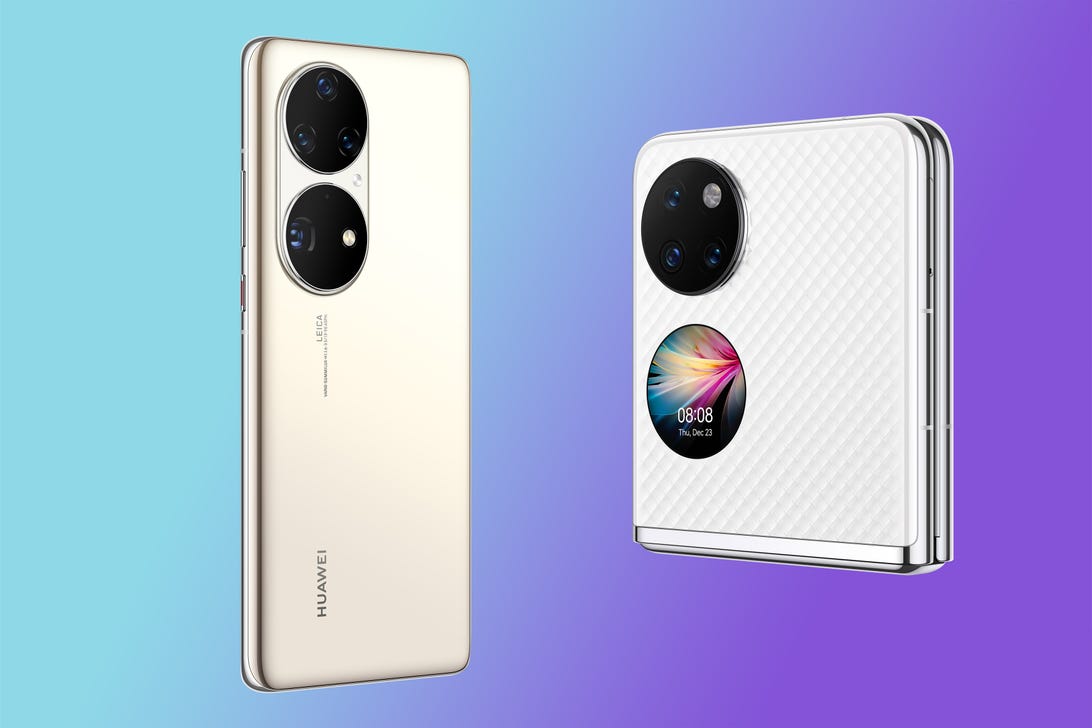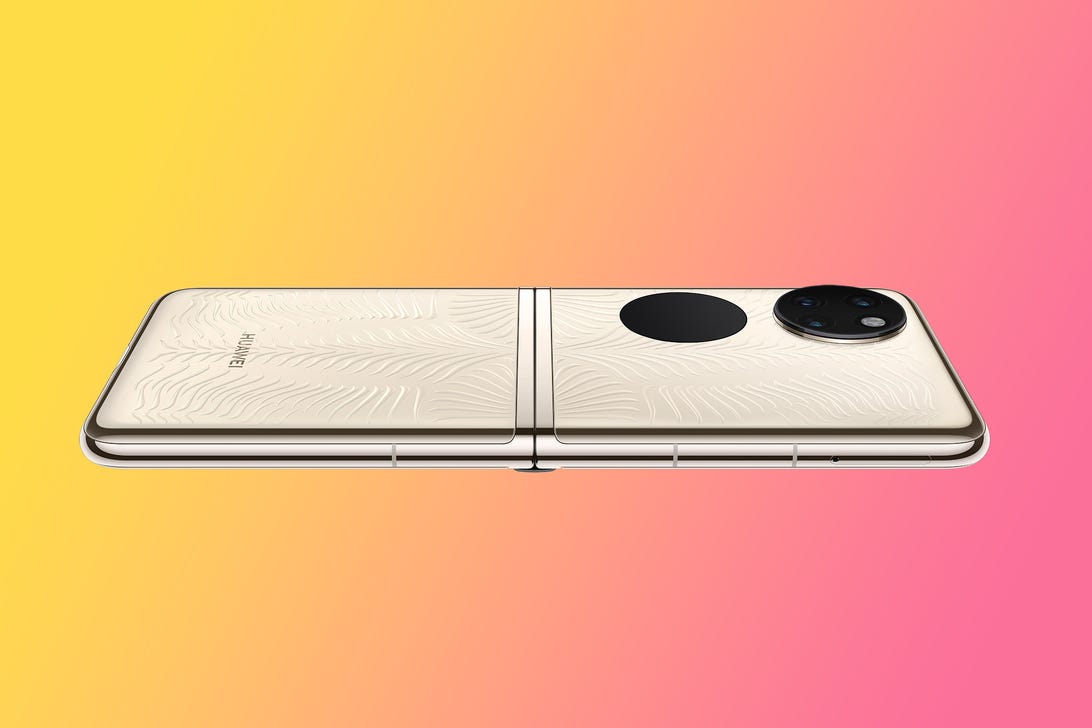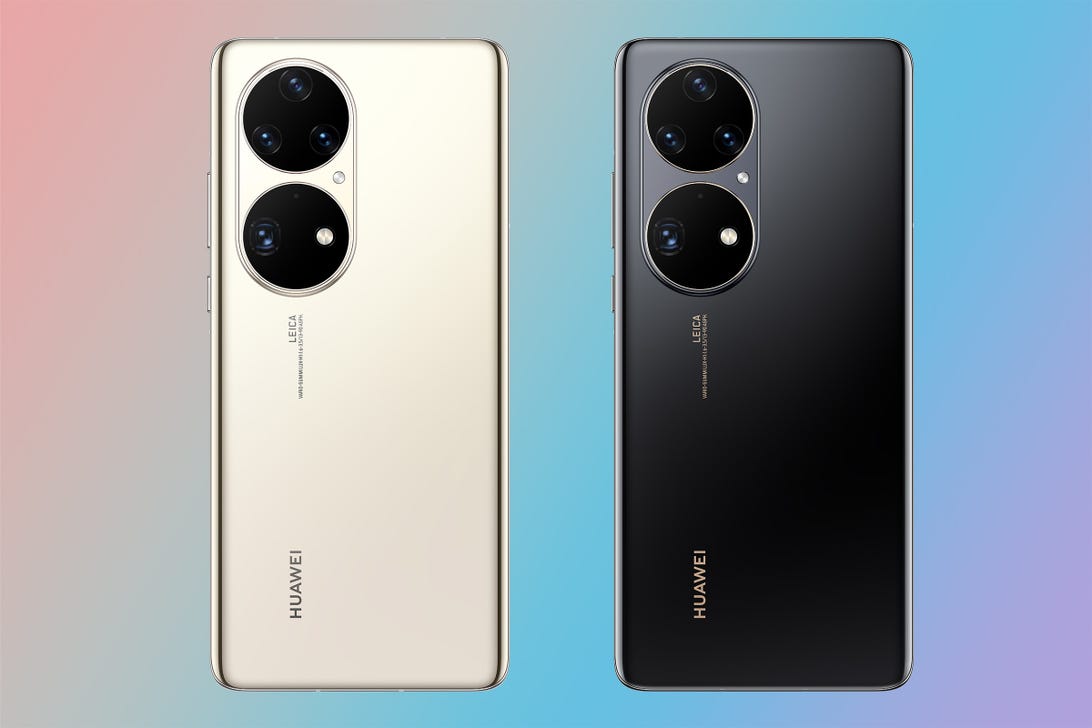
The Huawei P50 Pocket folds up like Samsung’s Galaxy Z Flip series.
Huawei/CNETFollowing their unveiling in China last year, Huawei’s foldable P50 Pocket and flagship P50 Pro will go on sale this month in the UK and wider Europe for about £1,090 and £1,005 respectively (converted from their €1,299 and €1,199 official pricing). Due to ongoing difficulties between Huawei and the US government, the phones won’t go on sale in the US, but those prices convert to about $1,470 and $1,355. This puts the phones squarely in luxury territory alongside the Galaxy S21 Ultra and iPhone 13 Pro Max.
Although both phones run Android at their core, due to US sanctions neither phone uses Google services (including Gmail, Chrome or the Google Play Store) and — despite their high price — neither phone has 5G. It’s increasingly unusual for a phone to not include some degree of 5G compatibility as networks ramp up around the world, especially in this price range.
The P50 Pocket is Huawei’s answer to Samsung’s Galaxy Z Flip, with a clamshell design that folds down into a small square. Visually it’s very similar to Samsung’s phone, although its outside features two large circles, one featuring a triple camera unit and the other acting as a handy external display for showing incoming notifications.


The folding P50 Pocket.
Huawei/CNETWhen unfolded, the phone has a 6.9-inch display with a 120Hz refresh rate, slightly bigger than the Z Flip 3’s 6.7-inch unfolded screen. There’s a 4,000-mAh battery under the hood and the camera — which features a 43-megapixel main sensor and a 13-megapixel superwide — uses the company’s XD Fusion Pro Ultra Spectrum Image Technology (seriously), which Huawei claims results in better HDR and more natural colors.
The P50 Pro, meanwhile, is the company’s more usual flagship phone, with a high-resolution 6.6-inch display, 4,360-mAh battery and 66W wired fast-charging. Based on the images, the P50 Pro has quite an attractive design, echoing the P50 Pocket’s two-circle design.
The P50 Pro is particularly geared toward photography with a 50-megapixel main camera, a 40-megapixel monochrome camera (which Huawei claims adds better detail and contrast to color images), a 13-megapixel ultrawide camera and a 64-megapixel telephoto camera that offers up to 200x zoom (including digital zooming). It also packs similar image processing technology to the P50 Pocket, promising improved colors, detail and low-light performance.


The P50 Pro in gold and black color options.
Huawei/CNETInside is a Qualcomm Snapdragon 888 chip which, based on the performance of last year’s Galaxy S21 Ultra (US version), should be extremely capable at most tasks you’d likely throw at it.
However these phones continue to come up against the barrier of having no Google services, which in particular means no downloading apps or services from the Google Play Store. While Huawei has expanded its own app store in recent years, many big names still aren’t on its shelves. The lack of 5G is against these phones too. Although 5G is yet to be readily available everywhere, the networks are expected to build up substantially over the two to three years that a customer will likely hold onto a phone for.
The result is that these phones will have to seriously impress from a hardware perspective — including photography, screen and fast-charging capabilities — to make up for the high price, lack of Google services and lack of 5G. We’ll have more thoughts once we’ve put these phones to the test.


